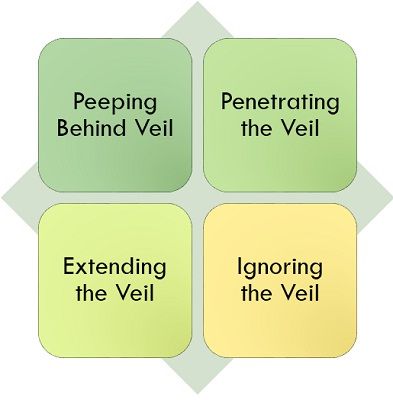Definition: The term ‘Corporate Veil’ is a combination of two words ‘corporate’ which means a ‘body corporate or company‘ and ‘veil’ which means a ‘cover or shield’. Therefore, it implies the shield of protection that lies amidst the actions of the corporation and the actions of its members.
Once the company is incorporated, it becomes a separate legal entity, i.e. the company is clothed with a corporate personality, different from its promoters, directors, members and employees. In this way, the concept of ‘Corporate Veil’ came into existence.
The objective is to provide efficacy and convenience to the business.
According to this concept, the company has a distinct identity in the eyes of law, from that of the promoters, directors, investors and so on. Thus, the entity itself is responsible for the debts and obligations. Moreover, it also safeguards the members from being liable for the liabilities.
Piercing or Lifting of Corporate Veil
As the name signifies, piercing or lifting of the corporate veil means looking beyond the company as a separate legal entity or ignoring the corporate status and focusing on the people behind it instead. As well as if any fraudulent and deceitful activities are carried on, the persons who are involved in the same, will not be able to take shelter behind the corporate personality.
The doctrine determines when the otherwise immune shareholders, directors, officers or promoters of the company will be regarded as liable for the wrongful act.
If the court finds that the company’s operations were not carried out as per the legal provisions. In such a case, the concept of corporate veil is kept aside by the court and the members, shareholders or directors are held personally liable for the activities done in the name of the company. And so the rights and liabilities of the corporation and its members are treated as same.
Grounds on which Corporate Veil is Lifted
The conditions in which the court may pierce the corporate veil is mainly classified into two groups:
- Under Statutory Provision
- When the membership is reduced.
- Improper use of the name
- Fraudulent conduct of business
- Failure in the refund of application money
- Misrepresentation in prospectus
- Non-payment of Tax
- Group of Companies, i.e. Holding Subsidiary Companies
- Ultra Vires Acts
- Tax evasion
- Under Judicial Interpretations
- Protection of Revenue
- Prevention of Improper conduct
- Economic Offences
- Fake Company
- Enemy Character of the Company
- Agency (Company acts as an agent for its shareholders)
Approaches Adopted by the Court to Pierce the Corporate Veil
There are four approaches adopted by the court to lift the corporate veil, discussed as under:
- Peeping Behind the Veil: The court adopts this approach to get the information about – details of the shareholders, the proportion of their holdings, who are the controllers and their interrelationship as to the control of the company. Once the information is collected the veil is pulled down and the company continues to operate as a separate legal entity.
- Penetrating the Veil: As the word ‘penetrate’ itself signifies, in this approach, the court passes through the corporate veil and finds out the controlling officers or members personally. The aim is to impose liability on the concerned persons, for the actions of the company and to determines their direct interest in the assets of the corporate.
- Extending the Veil: Another method of piercing the veil is to extend it, in order to grasp the group of companies. If a group of enterprises are carrying out a common activity, so in spite of seeking information from each one individually, they can be deemed as a single enterprise, under one extended corporate veil.
- Ignoring the Veil: If the court is of the view that the company is not commenced for commercial or any other sound objective, but to defraud or deceit creditors or to misled the laws, then this approach is used.
In the company’s law, the piercing of the corporate veil is the highly litigated doctrines of all.

Leave a Reply